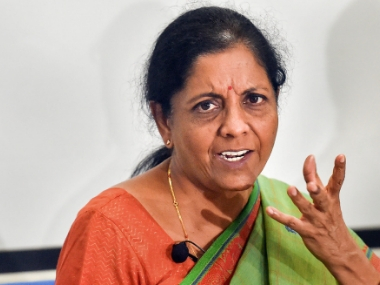From the beaches of Goa in the last throes of monsoon rains, a fresh breeze is blowing into India’s economy. Everything has a context in economic policy, and finance minister Nirmala Sitharaman has done well to stick her neck out with
a slew of tax cuts that should invigorate India’s sagging economy. Tattle talk of a “mini-Budget” apart, the minister may now have to put up with a new kind of critics: fiscal fundamentalists who may crib about the fact that the stimulus measures announced on a
market-cheering Friday three days after a Terrible Tuesday that saw a big stock market shock is either aimed at pleasing big business, or that it may bloat the fiscal deficit at a time when resources are under strain. The answer on both issues should be clear: Sitharaman has done the best possible thing under the circumstances because all pointers were raising the prospect of a vicious circle: low growth, low tax collections, low corporate mood, higher fiscal deficit, lower public spending, lower growth, lower jobs… [caption id=“attachment_5296901” align=“alignleft” width=“380”] File image of Finance Minister Nirmala Sitharaman. PTI[/caption] Now, with a steep corporate tax cut and a ceiling on the minimum alternate tax burden, she has definitely taken a step that smacks of a possible gamble. But nitpicking on the deficit of the world’s fastest-growing major economy in the backdrop of a six-year-low in
quarterly GDP growth with a demographic transition to manage is like asking a batsman chasing a victory target in a limited-overs cricket match not to play a lofted shot in the slog overs. The best-case scenario now looks the opposite of the vicious circle prospect: lower taxes, better market mood, higher disinvestment proceeds from public sector stake sales, tighter fiscal deficit, stronger corporate mood, fresh investments, better hiring, more jobs, more demand, higher growth and higher taxes. It does look like a virtuous circle scenario, but it is time to do a reality check because the best shot under the circumstances need not necessarily be a winning shot. There is, however, no denying the fact that things had reached a nadir in which financial services leader Rashesh Shah of Edelweiss said risk aversion in the corporate sector was at
three-decade lows. Putting some more money in the pockets of the corporate sector is not a bad idea if that be so. Questions do hang in the air: will this stimulus fan inflation that could be compounded by the oil price spike that followed rebel drone strikes on Saudi petroleum facilities this month? That definitely is a matter of concern, but inflation remains the least of worries. In the backdrop of
better-than-expected monsoon rains, the risk of inflation is certainly not a clear and present danger. Even if inflation does rear its proverbially ugly head, there is
plenty of room for some rearguard action. The immediate issue is of a demand crunch, and that is being addressed decisively. The emphasis on new manufacturing companies enjoying a tax-friendly entry is definitely a plus for “Make in India” dreams, and by extension, an effort to boost productivity-oriented jobs for lower-skilled Indians. This is no panacea for an estimated
4.75 million people entering the work-force every year, but you have to begin somewhere. As for the criticism that a corporate tax may be aimed more at the upper echelons of the corporate sector, Sitharaman did well a day before her Goa gambit to announce a virtual amnesty for difficult loans extended to micro, small and medium enterprises (MSMEs), besides a
“loan mela” roadshows across the country over the next weeks. Well, that does look close to a “helicopter drop” of money that conservative economists frown on, but the flip side is that an evenly spread out financial stimulus is better for the economy (and fairer) than a top-down push that may revive the financial markets without trickling down to the real economy. That leaves us still with poor farmers. One of Prime Minister Narendra Modi’s first decisions after assuming office for the second term in power was an
income support scheme for farmers. The government may have to watch out still because there is no guarantee that farmers gain evenly in an economic surge. Also, there is the risk of a
moral hazard in loan _melas_ , just like in non-performing assets (NPAs) caused by imprudent bank lending, MUDRA loans or Kisan Credit Cards. A default is a default is a default. A policy regime that signals an evergreening of loans is not on a strong wicket in the long-run. There is little doubt that the Insolvency and Bankruptcy Code (IBC) has not even scratched the surface of moral hazards in politically vulnerable banking.
The Goa bonanza is just in time for Modi to be cheered by prosperous non-resident Indians at Houston in the “Howdy Modi” show —but it must be remembered that both voters and critics of Modinomics are mostly in India. Sitharaman’s package is a good first move to revive the economy. But the virtuous circle scenario cannot be taken for granted. A lot now depends on a state of constant alert to read the signposts on the fiscal highway. The finance minister has just bought valuable time. Like in cricket, lofted shots are best played to locations where there are no fielders. What matters, in the end, are runs. In economic parlance, that means higher growth and more jobs for the millions while inflation is in check. (The writer is a senior journalist and commentator. He tweets as @madversity)


)

)
)
)
)
)
)
)
)



